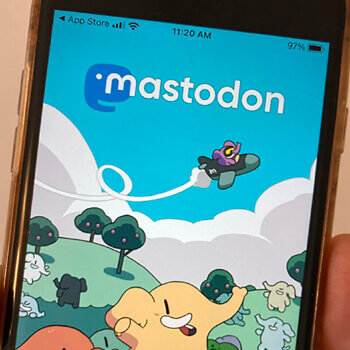Key Takeaways:
The fight against poverty and inequality is resuming with tools and programs that are more effective than ever before, thanks to a quiet revolt against business as usual. The evidence-based policy movement is increasingly being embraced by researchers, activists and government officials. The use of randomized controlled trials to assess social programs is one of the most powerful methods. The idea is to first apply the methods of science to see if the programs actually work, such as the use of “randomized controlled trials” to assess programs.
Among the many casualties of the coronavirus pandemic are the poorest of the global poor. Not only are they the ones who are usually hit hardest by the virus, but they’ve also borne the brunt of virus-induced wreckage in the world’s economies.
Before the pandemic hit the past four decades had seen global poverty rates plummet to less than a quarter of what they were in 1981. But that trajectory halted abruptly in the infamous year 2020, which kicked nearly 100 million people back into “extreme poverty,” defined as living on less than $1.90 per day. Nobody knows when or if they will recover.
Even in the United States, where the effects have been cushioned by trillions of dollars in federal pandemic relief, the economic recovery is leaving behind women, Black people and other historically disadvantaged groups.
The good news, though, is that the fight against poverty and inequality is resuming with tools and programs that are more effective than ever before, thanks to a quiet revolt against business as usual that is increasingly being embraced by researchers, activists and government officials.
Known as the evidence-based policy movement, this shift in people’s thinking dates back more than 100 years. But it really took off when tax revenues cratered after the Great Recession of 2008, says Sara Dube, director of the Pew Results First initiative. “States were searching for any sort of tangible tools or processes that could help them make the most of very limited resources,” says Dube. And the evidence-based approach offered them just that. Instead of just fielding more and more social support programs designed the standard way — via “good intentions, inertia, hunches, partisan politics, and personal relationships,” as a 2013 op-ed put it — the idea is to first apply the methods of science to see if the programs actually work.
A prime example is the once popular “scared straight” intervention, which tried to steer at-risk juveniles away from crime by showing them how awful prison could be. It seems like common sense. But whenever this approach is subjected to the same kind of randomized controlled trials used for testing drugs and other medical treatments — that is, whenever researchers compare a random selection of subjects who get the intervention to a control group of similar individuals who do not — the results are unequivocal: Scared-straight programs are worse than useless. If anything, they lead to an increase in criminal behavior. Many (though not all) jurisdictions have now abandoned them.
The use of randomized controlled trials to assess social programs, honored by the 2019 Nobel Prize in economics, is one of the most powerful methods in the evidence-based toolkit. Another, honored by the 2021 economics Nobel, is exploiting “natural experiments” in which similar groups do or don’t get a treatment by happenstance. An oft-quoted example is when New Jersey raised its minimum wage in 1992 and neighboring Pennsylvania did not: A comparison of the two states’ subsequent employment growth showed that higher labor costs did not depress hiring, despite the dire predictions of many traditional economists.
Still another method is to mine the troves of “administrative data” that government agencies routinely gather about the people they serve. These data streams, which include school attendance records, court documents, housing inspection results and much more, can be aggregated into a rich portrait of how people live, how they are faring and how various programs affect them. Congress gave a ringing endorsement to this kind of analysis when it passed the Foundations for Evidence-Based Policymaking Act of 2018, which requires each federal agency to make its administrative data publicly available (with appropriate privacy safeguards), and to develop a formal plan for evidence-based program evaluation.
Of course, none of this is going to solve the problem of poverty anytime soon; it’s far too complex and entrenched for quick solutions. But by putting the focus on data, as opposed to ideology and guesswork, the evidence-based policy movement is providing a much surer path toward that goal.
To see how this works in practice, consider what evidence can tell us about the newly prominent (and highly contentious) notion of giving everyone a basic income — no strings attached.
Evaluating universal basic income efforts
To the extent that poverty is just about being broke, giving people cash is the obvious solution. And of course, many developed nations do that already, through food stamps, unemployment benefits, child tax credits, welfare payments and a multitude of other cash transfers. What’s different about the basic income idea is the “no strings attached” part: The payments would go to everyone, with no work requirements and no questions asked about how rich or poor a recipient might be. (That’s the theory at least — many proposed programs do in fact include restrictions on who would receive the money.)
This is actually a very old idea, dating back at least to Thomas More’s 1516 fantasy Utopia. It helped shape the Social Security system during the 1930s, when Depression-era agitation to give the elderly a universal basic income was widespread. And it’s enjoying quite the resurgence in the United States these days — most notably during the lead-up to the 2020 Democratic presidential primaries, when candidate/tech entrepreneur Andrew Yang drew outsized attention with his proposal to tackle poverty and technological unemployment by giving every adult American $1,000 per month. But Yang was not operating in a vacuum. In 2019, for example, Stockton, California, had already started sending $500 per month to a selection of households in the city’s low-income areas, making it one of the first modern US cities to start a randomized controlled trial of a basic income. And many other cities have followed suit — especially during the economic chaos of the pandemic.
Perhaps not surprisingly, advocates on the political left see the basic income as a way to restore dignity and stability to chaotic lives, not to mention helping poor people pay for basic needs like food and shelter. But the idea has also drawn substantial support from conservatives — including such libertarian icons as the late economists Milton Friedman and Friedrich Hayek. If nothing else, goes the libertarian argument, a basic income could largely do away with the current welfare state: Instead of asking governments to micromanage dozens or hundreds of individual social programs, each with its own rules and bureaucracy, just give people the money to spend as they wish on the open market — and let them take responsibility for their choices.
To many others, however, especially (but not exclusively) on the right, the basic-income idea is anathema. Quite aside from the cost, which the government would have find a way to fund, “free” money is widely seen as discouraging work, rewarding bad choices, creating a culture of dependency and being an open invitation for recipients to squander every cent they get. As Republican Senator Chuck Grassley of Iowa put it, referring to the 2017 tax cut, the cut “recognizes the people that are investing, as opposed to those that are just spending every darn penny they have, whether it’s on booze or women or movies.”
From the evidence-based policy perspective, however, the impact of a basic income is a question to be settled by data — a stance that has resulted in an extensive research literature. In 2017, for example, economist Ioana Marinescu reviewed a number of randomized trials and natural experiments that have mimicked aspects of a basic income in the North American context. Marinescu, now at the University of Pennsylvania, included the 1970s-era US and Canadian trials of a “negative income tax” that returned money to people with earnings below a certain threshold; the Alaska Permanent Fund that has shared oil revenues with state residents since the early 1980s; a casino dividend that’s been distributed to members of the Eastern Band of Cherokees since 1997; and even lottery winners. Writing in the 2019 Annual Review of Economics, researchers likewise looked at basic-income-like initiatives from the developing world — among them a nationwide cash transfer launched by Iran after the government halted its food and fuel subsidies in 2011. And in 2020, the city of Stockton released an interim report on the first year of its basic-income experiment, written with independent researchers from the Universities of Tennessee and Pennsylvania.
What’s striking about these studies and many others is how consistent the findings are. Sure, says Paul Niehaus, an economist at the University of California, San Diego, and a coauthor of the 2019 review, if you’re in a cherry-picking mood “you can easily find stories to confirm your view of the world.” There will always be that one individual who does indeed squander all his money on “temptation goods” like alcohol, drugs or tobacco. But when you aggregate the data over all of the study’s participants, says Niehaus, such individuals tend to be the exception, not the rule. Even in the most deprived populations, he says, he and his colleagues find that recipients still spend much of their money on things like food, shelter and education — or even, in some cases, starting new businesses.
Some studies also show that recipients are at least somewhat more likely to have jobs than their counterparts in the control group — possibly because having a more stable financial situation makes it easier for them to go out and look for work. (Among the few examples to show a decline in employment rates were the 50-year-old negative income tax experiments. But even there, according to Marinescu, the drop barely had statistical significance.) And recipients often report substantial improvements in quality-of-life measures like nutrition, health and educational attainment.
That said, adds Niehaus, few if any of the experiments to date have been a truly rigorous test of the basic-income idea, mainly because of their limited scope. In some cases, he says, “they’re small-scale in the sense that they’re enrolling individual people and not entire communities.” So would more new stores (and jobs) open up if everyone in the neighborhood got paid? In other cases “they’re small-scale in the sense that they’re giving people money for a year or two, but not making a long-term commitment,” says Niehaus. So would people’s spending habits be any different if they knew their basic needs would be met for the next decade, and not just for the next year?
Since 2017, Niehaus has been part of a team of researchers trying to answer such questions with the largest and longest trial of the basic-income idea yet. Encompassing 14,474 households in Kenya, the experiment has randomly assigned 295 villages either to a control group that gets no payments; a lump-sum group in which every adult villager gets a one-time payment of about $500; a short-term group in which every adult gets 75¢ per day for two years (enough to meet basic needs in Kenya); and a long-term group in which the same daily payments will last for 12 years.
He and his colleagues are already analyzing some of the interim results, says Niehaus. When the Covid-19 pandemic hit, for example, they found that basic-income recipients generally experienced less hunger than control-group members, and had less sickness in their households.
Niehaus and his group are also planning their post-pandemic return to the field: “A key point here is that we care about the impacts on behavior now of expecting to receive transfers in the future,” he points out, “so we don’t need to wait 12 years to learn about some of the most important questions.”
A need to address systemic barriers in poverty
Even when those answers are in, however, that still leaves a host of questions that data alone can’t satisfy. How would a basic income program be funded, for example? Would it be universal, going to everyone, or targeted at the neediest? Would it supplement existing anti-poverty programs, or replace them?
And even if you somehow reached enough consensus on those questions to get a basic income enacted, that still wouldn’t be enough. “Poverty isn’t just about the lack of money, it’s about the lack of opportunity,” says Carrie Cihak, who is both a research affiliate at the Center for Advanced Study in the Behavioral Sciences at Stanford University, and policy director for King County Metro, the public transit agency for a swath of Washington state that stretches from Seattle and its suburbs to the Cascade range.
Those opportunity shortfalls comprise a very long list of barriers that include lack of access to childcare, health care, good food, decent housing and quality education; mental health and addiction issues; the impact of an arrest record on job prospects — and yes, the legacy of past and present racism.
But a particularly frequent pain point is transportation, says Cihak, which is why her agency is interested: “Human service agencies are constantly scraping and scrambling to figure out ways to get their clients to something,” from court appointments to health visits to a community college class to the kids’ drop-off at preschool. “It is a constant struggle for people,” she says.
Obviously, says Cihak, governments at every level are already trying to address all these barriers with any number of social support programs, from transit subsidies to job training initiatives. And, as documented in an extensive database of studies maintained by the advocacy group Results for America, evidence-minded researchers and agencies are evaluating such programs as fast as they can.
Yet the systemic-barrier problem remains a research frontier for the evidence-based policy movement, says Cihak. It’s like the difference between testing a new drug and reforming the health care industry: Randomized controlled trials and all the rest are great at evaluating the effect of specific interventions on specific populations under specific conditions — but not for fixing issues that are so interlinked and intertwined that they can’t be solved in isolation.
“Poverty isn’t just about the lack of money, it’s about the lack of opportunity.”CARRIE CIHAK
For problems like this, says Cihak, “evidence-building takes time. It isn’t about one study but is a continuous learning process” — something that’s always been tough for social service agencies constrained by funding, pressure to get services out the door quickly and institutional rules and practices that may not always serve the people they’re trying to help.
Again, though, the good news is that these agencies seem to be undergoing a noticeable culture change. Thanks in part to the evidence-based policy movement, says Jake Bowers, a political scientist at the University of Illinois who coauthored an assessment of the movement in the 2019 Annual Review of Political Science, “a growing number of people who are in charge of providing services from different governments are willing to try out new ideas.” They are also approaching the social service development process with a new kind of humility, says Bowers: Instead of developing an anti-poverty program in isolation and trying to sell it as something that is absolutely, definitely, guaranteed to work, they’ve begun to treat the process as a chance for testing, being wrong and learning.
There are even signs of change in the political sphere. “The hope is that good science doesn’t just produce good policy, it produces good politics,” says Paul Testa, a Brown University political scientist and Bowers’s coauthor. So even when competing sides violently disagree on principle, he says, “if they could agree on a process to generate evidence of what works best, that would help reach consensus.”
Granted, that seems like a pretty big “if” these days. But maybe not. The aforementioned Evidence Act of 2018 managed to sail unscathed through a Congress mired in bitter partisan gridlock, after all. It passed both houses with near-unanimous bipartisan support. And it was signed into law without a murmur. By President Donald Trump.
“There’s understandably a lot of cynicism out there about how policy is made,” says Richard Hendra, data chief for MDRC, a nonprofit that’s been doing evidence-based policy research since its founding in 1974 as the Manpower Demonstration Research Corporation. But after working with both parties, he says, “I’ve been impressed how much people do listen to evidence.”





























